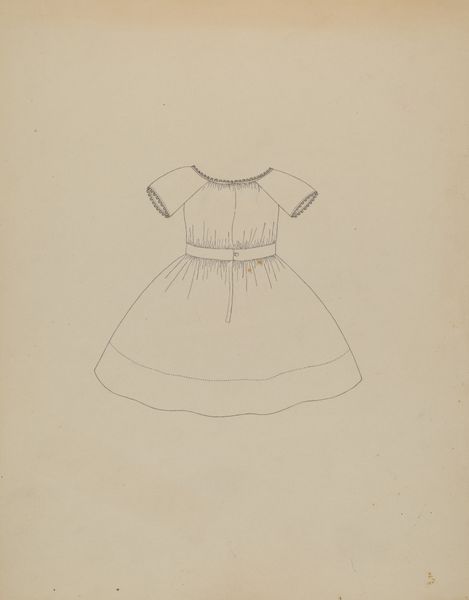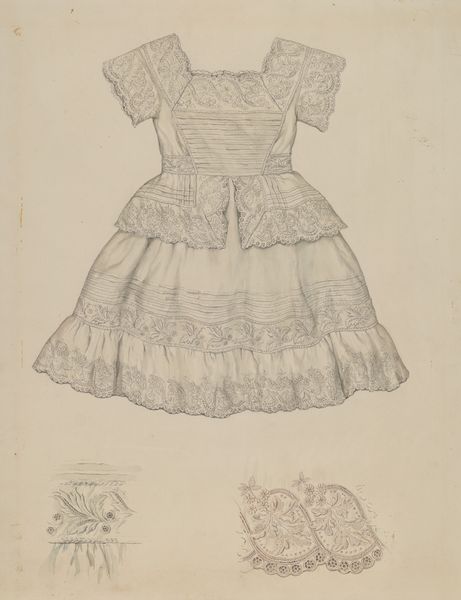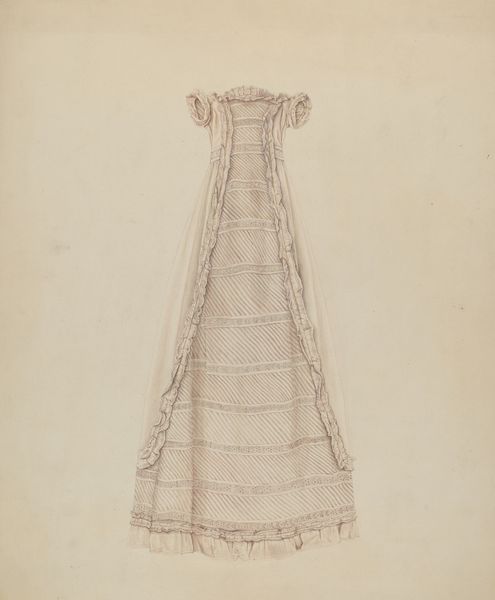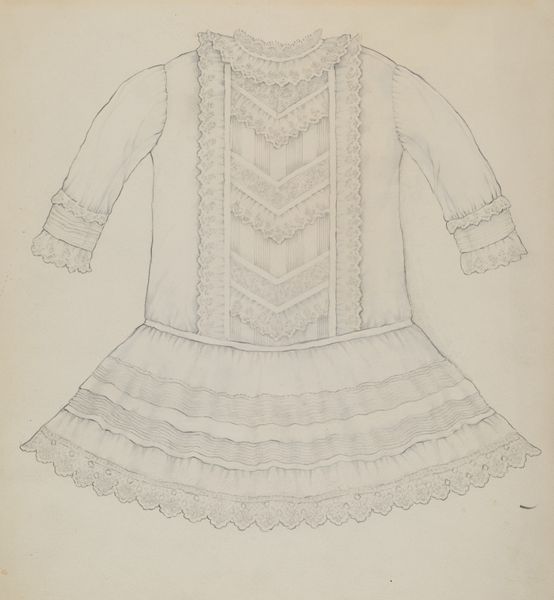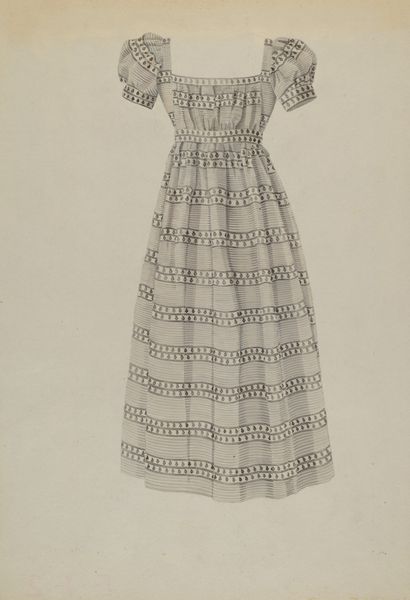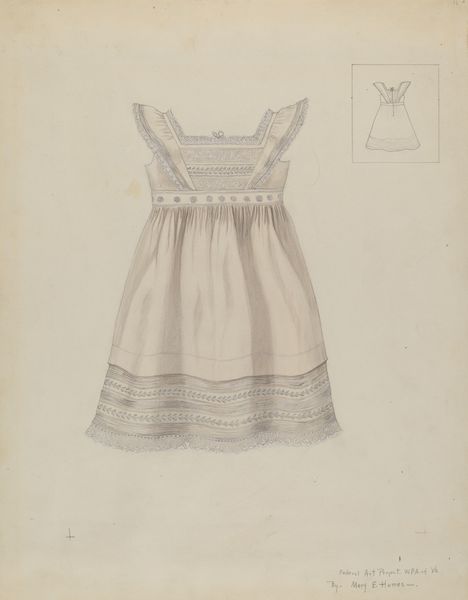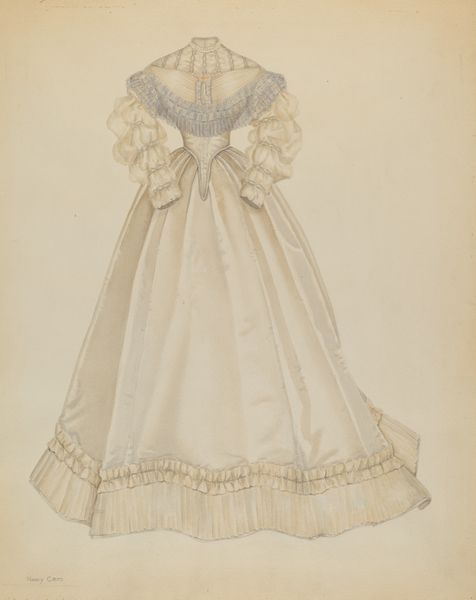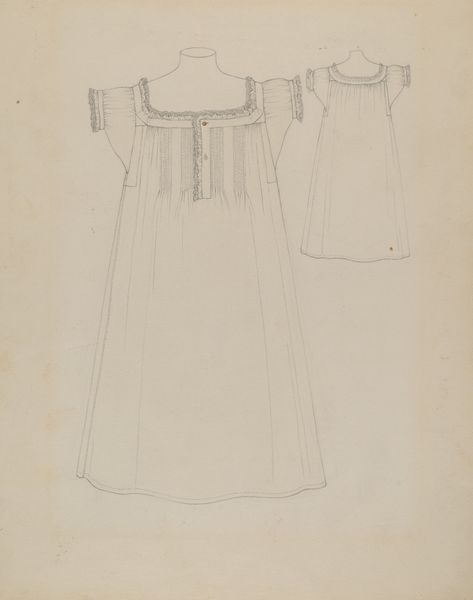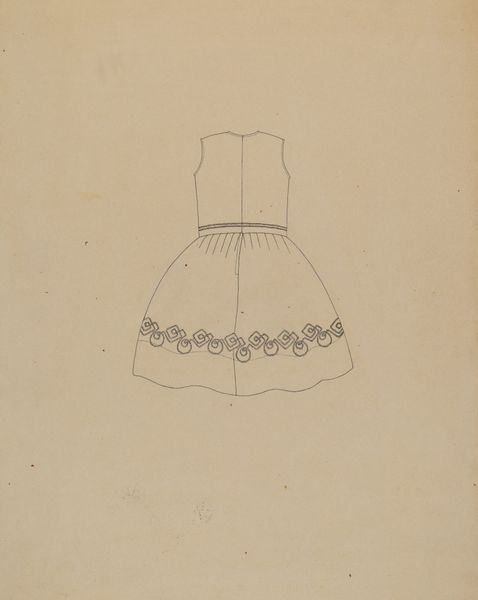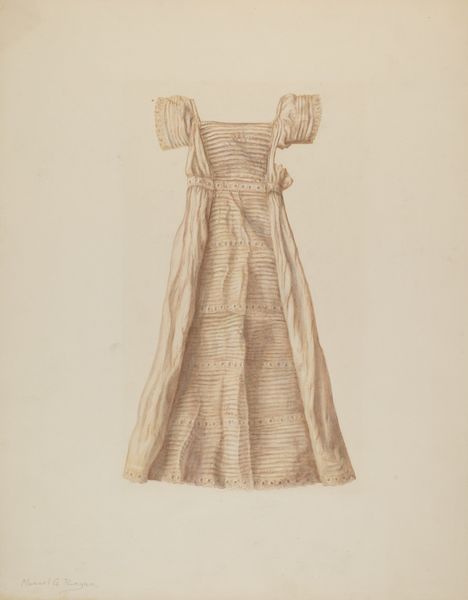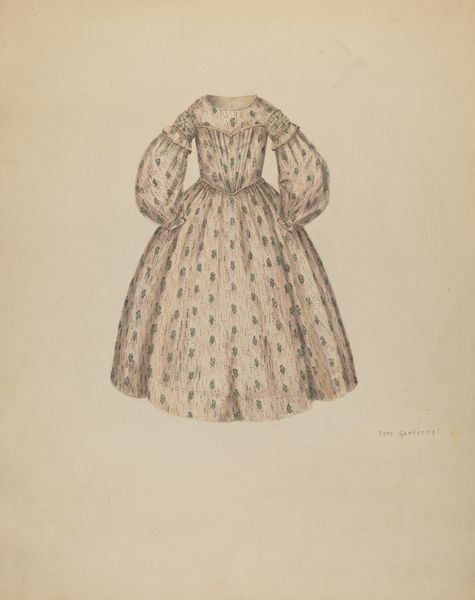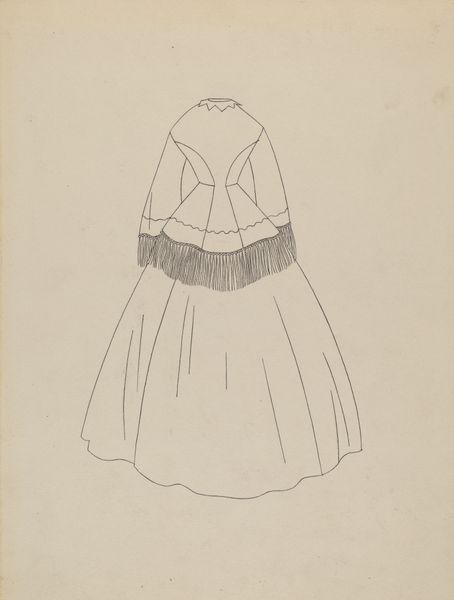
drawing, paper, pencil
#
drawing
#
aged paper
#
toned paper
#
light pencil work
#
pencil sketch
#
sketch book
#
paper
#
personal sketchbook
#
idea generation sketch
#
pencil
#
sketchbook drawing
#
pencil work
#
sketchbook art
#
realism
Dimensions: overall: 33.6 x 28 cm (13 1/4 x 11 in.) Original IAD Object: 21" in length; 11" at the waist; 7" at the neck
Copyright: National Gallery of Art: CC0 1.0
Editor: Here we have Gladys C. Parker's "Child's Dress," a pencil drawing on paper from around 1937. It feels so delicate and precise. What can you tell me about this drawing from a formalist perspective? Curator: Certainly. Immediately, I'm struck by the composition. Note how the artist uses linear perspective within the folds of the dress to create depth, though subtly. The rhythmic repetition of lines, particularly in the skirt, establishes a visual harmony. How do you see the use of light and shadow? Editor: It's very subtle. It's all very light pencil work, making the dress seem almost ethereal. Is that a deliberate choice? Curator: Indeed. The tonal variations are minimal, serving primarily to define form rather than to create dramatic contrasts. This flattening contributes to the drawing's conceptual nature; we are presented with an idea of a dress, meticulously rendered but ultimately an object of aesthetic contemplation. Notice the carefully rendered texture, even though it is merely suggested by variations in the pencil strokes. Does this emphasize the material quality for you? Editor: I see that. It makes me focus on the artistic choices rather than the actual dress itself. The precision does seem to separate it from being just an everyday item. Curator: Precisely. The dress's form becomes a vehicle for exploring the artistic potential of line, tone, and composition. The slight imperfections visible in the 'aged paper' adds a tactile dimension that enriches our engagement with the work, as well. Editor: It’s fascinating to consider how even a seemingly simple sketch can be so rich in artistic intent through line and tone alone. Curator: And how such formal considerations elevate the piece beyond a mere depiction into an independent aesthetic object.
Comments
No comments
Be the first to comment and join the conversation on the ultimate creative platform.
